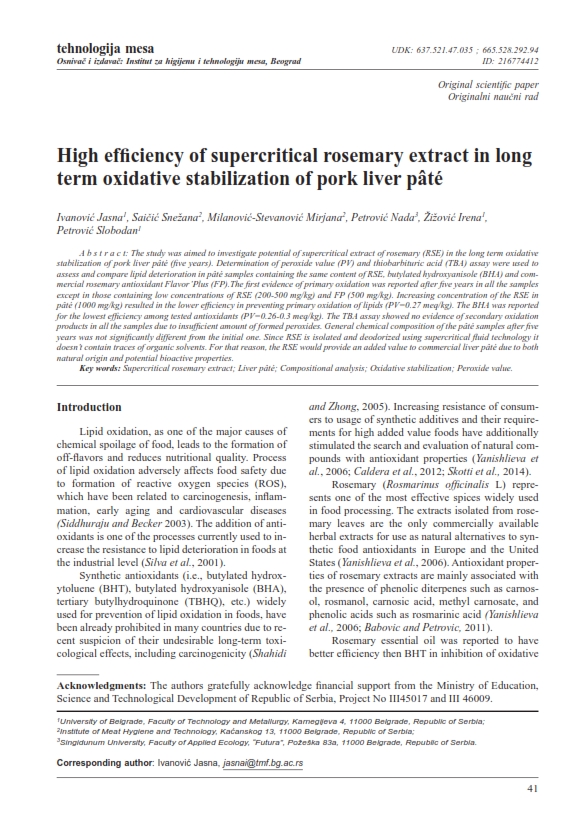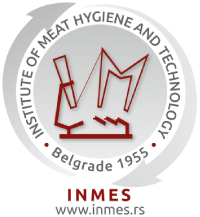High efficiency of supercritical rosemary extract in long term oxidative stabilization of pork liver pâté
Abstract
The study was aimed to investigate potential of supercritical extract of rosemary (RSE) in the long term oxidative stabilization of pork liver pâté (five years). Determination of peroxide value (PV) and ahiobarbituric acid (TBA) assay were used to assess and compare lipid deterioration in pâté samples containing the same content of RSE, butylated hydroxyanisole (BHA) and commercial rosemary antioxidant Flavor’Plus (FP).The first evidence of primary oxidation was reported after five years in all the samples except in those containing low concentrations of RSE (200-500 mg/kg) and FP (500 mg/kg). Increasing concentration of the RSE in pâté (1000 mg/kg) resulted in the lower efficiency in preventing primary oxidation of lipids (PV=0.27 meq/kg). The BHA was reported for the lowest efficiency among tested antioxidants (PV=0.26-0.3 meq/kg). The TBA assay showed no evidence of secondary oxidation products in all the samples due to insufficient amount of formed peroxides. General chemical composition of the pâté samples after five years was not significantly different from the initial one. Since RSE is isolated and deodorized using supercritical fluid technology it doesn’t contain traces of organic solvents. For that reason, the RSE would provide an added value to commercial liver pâté due to both natural origin and potential bioactive properties.
Key words: Supercritical rosemary extract; Liver pâté; Compositional analysis; Oxidative stabilization; Peroxide value.





